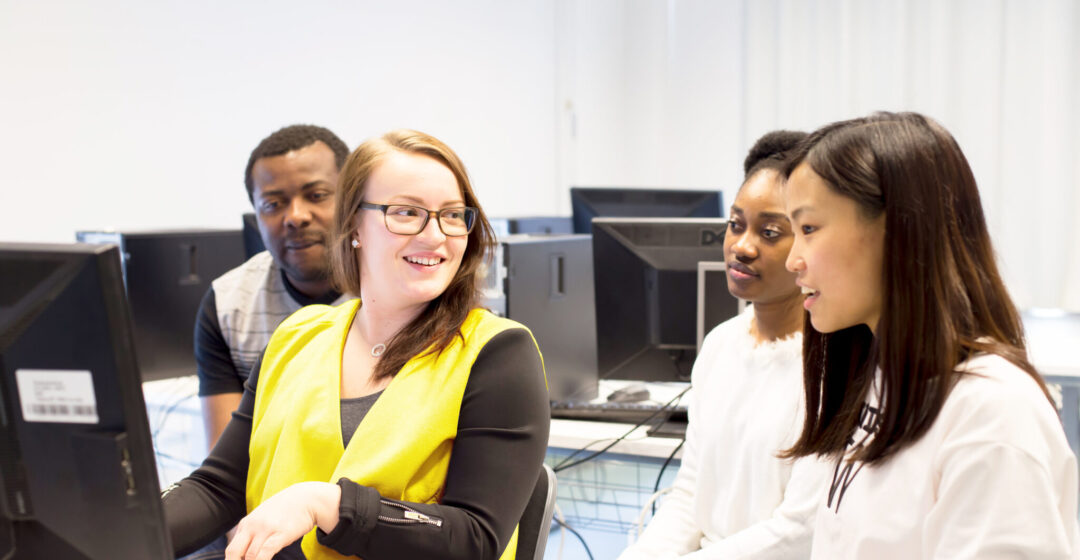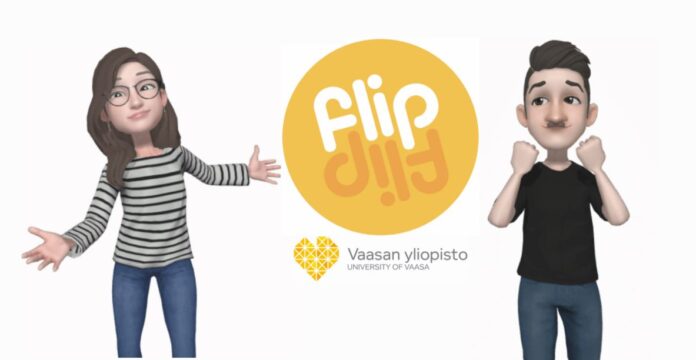This post has been written by Anu Koskela (firstname.lastname@uwasa.fi). She is currently working as the University of Vaasa Digivisio 2030 Change coordinator. Before joining the University of Vaasa, she worked as an academic in the UK, in the field of linguistics. Her specialist area is lexical semantics (the study of word meaning) and she is the author of a number of papers and book chapters on the ways in which words can have multiple meanings and ambiguous relationships with other words.
Lately I’ve been thinking about the nuances of the meaning of learner and its Finnish equivalent oppija. I come across these terms frequently in my involvement with the Digivisio 2030 project. In Digivisio 2030, Finnish universities (incl. universities of applied sciences) are working together to build an “ecosystem of learning for the future”. The key aim is to meet future needs of society by making it easier for people to engage in continuous or lifelong learning, i.e., maintain and develop their skills and knowledge by making use of courses and learning content from different Finnish higher education institutions.
In all the Digivisio communications and materials, the intended users of the open learning platform being developed are always referred to as learners (in Finnish, oppijat), rather than students (Fin. opiskelijat) (see e.g. the project description of their vision for the future of learning). The project also often points to learner-centricity (oppijakeskeisyys) as one of its guiding principles – again, rather than student-centricity (or opiskelijakeskeisyys). For example: “The aim of the joint Digivisio of all Finnish higher education institutions is to make Finland a model country for learner-centered and flexible learning by 2030” (source).
Although learner and student can in certain contexts be used almost interchangeably, in the context of Digivisio, learner and learner-centricity (and naturally also the Finnish oppija and oppijakeskeisyys) are used deliberately instead of student and student-centricity – and with nuances of meaning that that differ somewhat from how the terms are used in everyday language or elsewhere in educational discourse.
Learners
Learner and oppija generally refer to someone who is learning (i.e., acquiring knowledge or skills), whereas a student (or opiskelija) is someone enrolled at an educational institution or on a particular course with the intention of learning.[1] In everyday language, we might not immediately think of learner as a superordinate of student in quite the same way as, say, dog functions as a superordinate of spaniel or vehicle as a superordinate of car. For instance, superordinate and subordinate terms commonly occur together in phrases of the type spaniels and other dogs, or vehicles, including cars. In contrast, phrasings such as students and other learners and learners, including students are not common in everyday language, but can be found in the discourse of education studies or educational administration. And this is of course the type of usage we also find when the Digivisio materials refer to learners/oppijat.[2]
More specifically, given Digivisio’s focus on fostering lifelong learning, learner and the Finnish oppija are intended to be understood as inclusive superordinate terms that include those we might call students/opiskelijat (in an HE context, most readily understood to be full-time degree students), but importantly also other adult lifelong learners engaged in studying and learning with different motivations, goals, etc. This broader, inclusive usage of learner/oppija is therefore intended as a means of widening the perspective beyond those we traditionally consider (or who might self-identify) as students/opiskelija.
So who are the learners, then – specifically when referring to the potential users of the Digivisio open learning platform? A brief explanation can be found in the What does a learner look like? video, but to provide a more concrete understanding of the notion of learner/oppija, the Digivisio project has also produced a report on the envisaged user groups of the open learning platform (full report in Finnish: Korkeakoulujen oppijaymmärrys: Käyttäjäryhmät ja persoonat [requires Eduuni login to access]).
The report identifies five core user groups:
- Young people studying for their first higher education degree
- Doctoral students
- Those wishing to further enhance their professional skills (“upskillers”)
- Career changers (“reskillers”)
- Those undertaking learning for personal interest and self-improvement
The groups are not mutually exclusive: a single individual may well belong to different groups at different stages of their life and perhaps even simultaneously. It is also important to note that cross-cutting this classification, which is based on the learner’s life stage and their goals and motivations for learning, are other groupings that relate to the learner’s linguistic/cultural/social background or particular personal attributes, such as the following:
- International learners
- Swedish-speaking Finns and Sámi people
- Neurodivergent individuals
- Those with physical or sensory disabilities
- Those with mental disorders
- LGBTQI+ individuals
In other words, a particular learner might be, say, a 20-year-old Swedish-speaking autistic person who is completing their first degree at a Finnish university, or perhaps a recent immigrant to Finland with a visual impairment who is studying in order to reskill for a different career.
To further flesh out these broad user categories, the Digivisio user group report also presents five pseudonymised, partly fictionalised learner profiles that are based on real individuals. Each of these profiles is intended to act as representative of their respective user group, as follows:
| User group | Learner profile |
| Young people studying for their first higher education degree | “Akseli” is 20 and is studying Fashion and Textiles at a university of applied sciences and is dreaming of starting his own clothing brand. |
| Doctoral students | “Rikhard”, 30, is studying for his doctorate and also teaches at university. He is highly academically capable and is studying a subject area that he is passionate about. |
| Those wishing to further enhance their professional skills | “Janika”, 30, works as a primary school teacher but wants to qualify as a secondary school subject teacher, as this would improve her pay and career prospects. |
| Career changers | “Roosa” is 45 and used to work in the hospitality industry. However, a long-term physical illness has meant that she is now looking for a career change and to that end is taking courses in Cultural studies. |
| Those undertaking learning for personal interest and self-improvement | “Mirka”, 40, has a Master’s degree in Economics and Business Administration and has a good, steady job in a business-related profession. In her free time, she enjoys true crime entertainment and for that reason has also developed an interest in studying criminology as a hobby. |
These profiles provide a concrete illustration of the types of different concerns, needs, motivations and goals learners might have.
Learner-centricity
Given that Digivisio interprets learner/oppija as an umbrella term for a wide range of adult learners, the term learner-centricity (Fin. oppijakeskeisyys) is also given a particular interpretation when used to describe the project aims and its core principles.
Those familiar with learning theories are likely to have come across the notion of learner-centricity with reference to the constructivist notion of learning. In constructivism, learning is seen as a process where the learner actively constructs knowledge and the teacher’s role is to facilitate that process – hence the perspective on teaching/learning can be said to be centred on the learner (see e.g. Seel (ed.) 2011. Encyclopedia of the Sciences of Learning).
This notion is by no means irrelevant to how learner-centricity/oppijakeskeisyys are understood in the context of Digivisio. But given that learner/oppija are specifically used to refer to a broad, diverse class of adult lifelong learners, the terms learner-centricity and oppijakeskeisyys also acquire an additional dimension of meaning, namely a strong emphasis on the need to consider learners at different stages of their lives and with different motivations and goals for studying.
In other words, learner-centricity means bearing in mind the needs of degree and doctoral students, upskillers, reskillers and self-improvers, whether it is in the selection and design of the courses and learning content to be offered through the Digivisio open learning platform, the pedagogical methods or teaching and learning activities adopted on courses, or the support services offered to learners.
Or to put it yet another way, learner-centricity means trying to see things from the point of view of “Akseli”, “Rikhard”, “Janika”, “Roosa” and “Mirka” alike.
[1] Student and opiskelija are of course not exact translational equivalents. The meaning of opiskelija is more restricted than that of student: in English, those studying at a lower secondary school (and in American English, even those in primary school) can be called students, but would not be called opiskelija. In Finnish, only those engaged in higher secondary and tertiary education are referred to as opiskelija. An exception to this are adults in lower secondary education (e.g. those who did not complete secondary school but return to their studies later in life) – they would also be called opiskelija (see the Finnish Ministry of Education and Culture’s Glossary of terms related to teaching and education Opetus- ja koulutussanasto (OKSA), 2. laitos). This indicates that the meaning of the Finnish opiskelija includes a stronger assumption of independence than the English student. Student also has meanings that opiskelija doesn’t have, including ‘a person who takes a particular interest in something’ (Oxford Dictionary of English, 2010), as in He was always a keen student of human nature.
[2] The superordinate usage of learner/oppija is also defined in the OKSA glossary, where oppija (and its translational equivalent learner) is given the definition ‘any person either engaged in education or who is seeking to or has applied to undertake studies, at any stage of their life’ and specifically marked as a superordinate of opiskelija/student.


